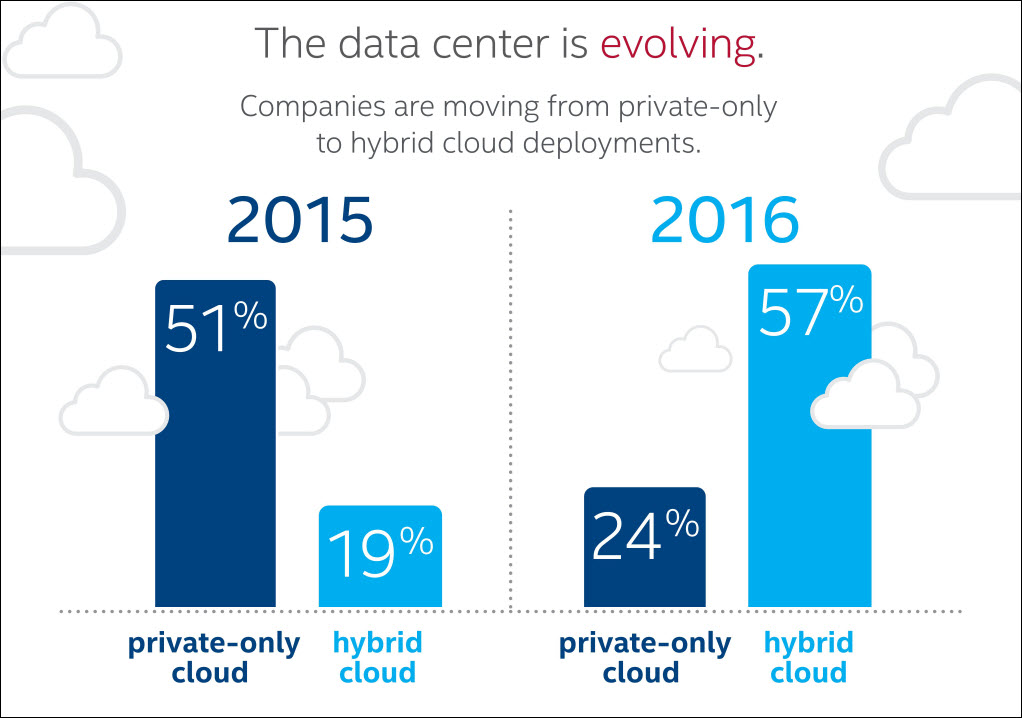 CLOUD
CLOUD
 CLOUD
CLOUD
 CLOUD
CLOUD
If a new report by Intel Corp.’s security arm is to be believed, cloud computing has finally turned the trust corner.
Intel Security is kicking off RSA Security LLC’s 2017 Conference in San Francisco this week with the results of a global survey of more than 2,000 information technology professionals about their attitudes and practices regarding cloud adoption and security.
The survey finds that not only are businesses moving to the cloud at an accelerating rate, but many of their past reservations about security and privacy controls have been put to rest. Those who say they trust public clouds now outnumber those who distrust them by more than two-to-one.
Trust is up significantly from the previous year’s survey, with more than 70 percent of organizations saying they “slightly trust” or “completely trust” public cloud providers with sensitive data. That’s up from 50 percent last year. Nearly three-quarter of organizations store some or all of their sensitive data in a public cloud.
The survey documents a clear shift toward cloud as a default deployment option. More than 80 percent of organizations now follow a “cloud-first” strategy, in which priority is given to applications that can be purchased as a service or deployed in the cloud rather than in the data center. The primary benefits of public cloud are seen as lower cost of ownership, better visibility into data and data safety.
Not that cloud is some kind of IT Shangri-La. Respondents also report severe cloud management skills shortages and difficulty controlling “shadow IT,” or the self-provisioning of cloud services by business users without the blessing or knowledge of the IT organization. Only 15 percent of those surveyed say they don’t have a skills shortage, and nearly half say the lack of cybersecurity skills has slowed their use of cloud services.
The annual survey indicates that the problem of shadow IT may be growing, despite the best efforts of IT organizations to evolve their governance standards. Respondents estimate that nearly 40 percent of cloud services are commissioned without IT’s involvement. Comparative data shows that IT’s visibility into shadow IT services actually fell from the previous year.
This lack of control is slowing cloud adoption, with 65 percent of respondents saying shadow IT interferes with their efforts to keep the cloud secure. More than half say they’ve tracked a malware infection to a software-as-a-service application. Compromised user credentials are the leading cause of a security breach. Nevertheless, technologies that help secure cloud data such as loss prevention, encryption and cloud access security brokers are underused, Intel said.
Use of hybrid cloud saw a big jump in year-to-year comparisons. The percentage of organizations that use only private clouds dropped from 51 percent in 2015 to 24 percent in this survey, while hybrid cloud use tripled from 19 percent to 57 percent (pictured).
The percentage of organizations using only public cloud dropped from 30 percent to just 19 percent. The average number of cloud services in use in respondent organizations dropped from 43 in 2015 to 29 in 2016, indicating that companies are winnowing down the profusion of cloud providers to a select few.
THANK YOU